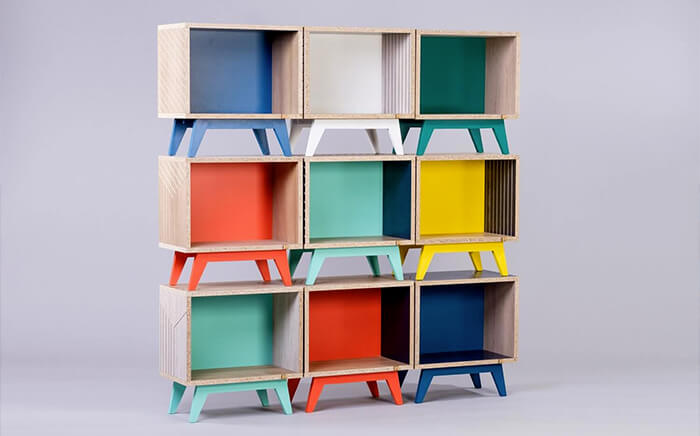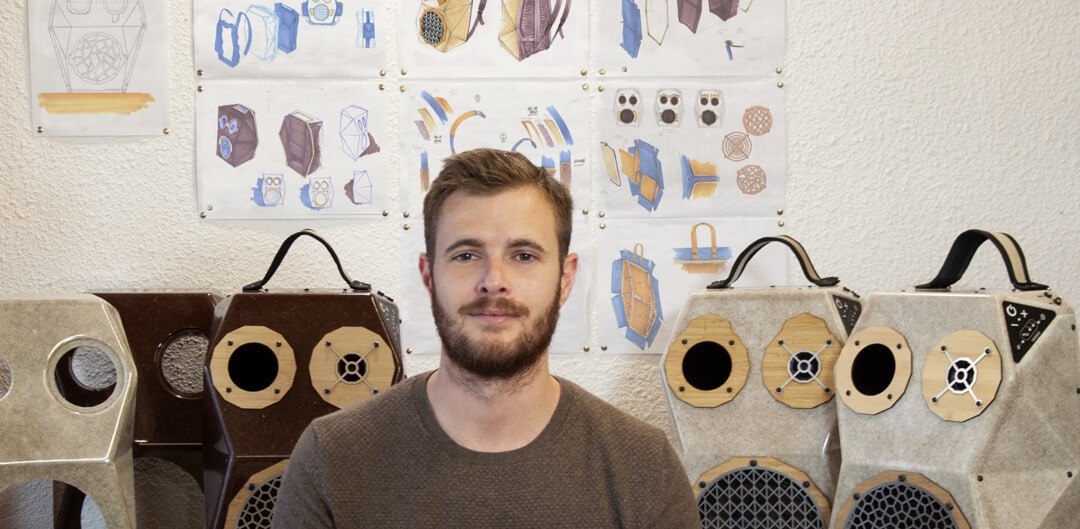READING TIME: 7 MIN
Geoffrey Dromard, graphic artist & designer at PEOPEO, reveals his inspirations and presents his work within the team.
Can you tell us about your background and what led you to become a designer?
The desire to create has always been part of me. At first I wanted to be a cartoonist, but then I discovered the Applied Arts. What interested me was putting my creativity at the service of others. Being a designer also means working with a wide variety of people, depending on the project (sociologists, anthropologists, ergonomists, engineers, etc.), and enriching my personal life.
After studying Product & Packaging Design, I worked as a graphic designer and illustrator in agencies and on a freelance basis. This enabled me to broaden my creative skills and work for completely different structures (associations, local authorities, small and large companies...).
Here are a few projects in line
What made you want to work with PEOPEO?
What really appealed to me was the opportunity to work on the designer's job in its entirety, to start from scratch and imagine everything.
From Industrial Design (creation of the VOODOO), to Graphic Design (implementation of the PEOPEO brand visual identity), to Web Design (website, newsletter, social networks...) or Space Design (stand creation), my job allows me to change hats often.
What did you want to bring to the brand in your first designs, and what were your inspirations?
The loudspeaker market is highly competitive and saturated, so my aim was to come up with a strong, disruptive global design that would make a lasting impression and reflect our values of sharing, adventure, freedom and eco-design.
It was only when I had the specifications for the speaker cabinet design ( linen fiber parts) that the idea of drawing a face seemed obvious. TheVOODOO speaker 's face allows the user to appropriate theBluetooth speaker and adopt it as a companion.
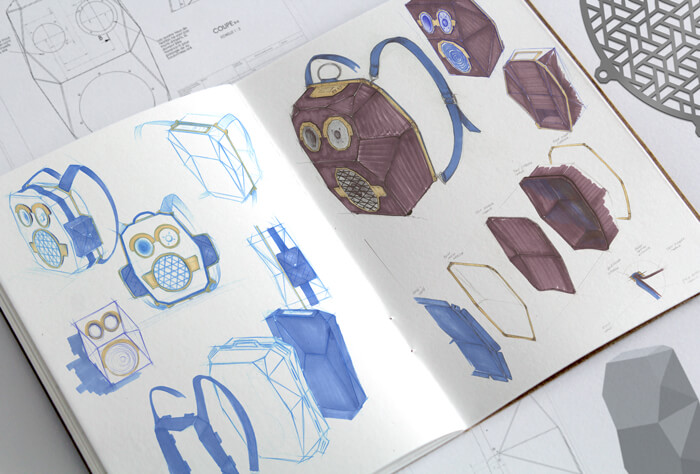
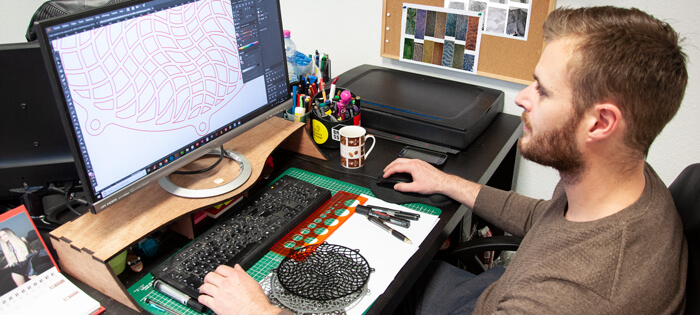
The brand's visual identity had to follow the spirit of theVOODOO loudspeaker product, i.e. a tribal, festive and timeless image.
Is it more difficult to design a product for outdoors than for indoors?
It's clear that a product that goes outdoors has to respond to more issues and standards, but it's even more difficult to design an outdoor, nomadic product.
For the VOODOO we studied its ergonomics with the team to find an optimized mode of transport. Carrying a rigid structure can quickly cause back pain. That's why we designed the shape of the shell to fit the back perfectly. The foam back pads riveted to the shell provide more comfortable support. The positioning of the shoulder straps on theenclosure and their foam reinforcements ensure better weight distribution and more comfortable portability on the shoulders.
What are your working and creative methods (drawing, sketching, inspiration)?
Phase 1: drinking a big bowl of coffee ☕
Phase 2: observe and analyze new things while listening to music 🔊
Phase 3: Experiment by drawing, coloring, make-up, photoshop (the method is different for each project)... test, test and test always while listening to music ✏️
Phase 4: It's very important to ask outsiders for their opinion! 🧑
Phase 5: Re-testing and re-requesting outside opinions, deciding and finalizing my proposals 💡
Phase 6: Celebrating the end of the creative mission 🎉
How would you define your "style"?
It's hard to define a style, as many things inspire and influence my work. I appreciate childlike, colorful, poetic, surprising, funny and even kitsch design.
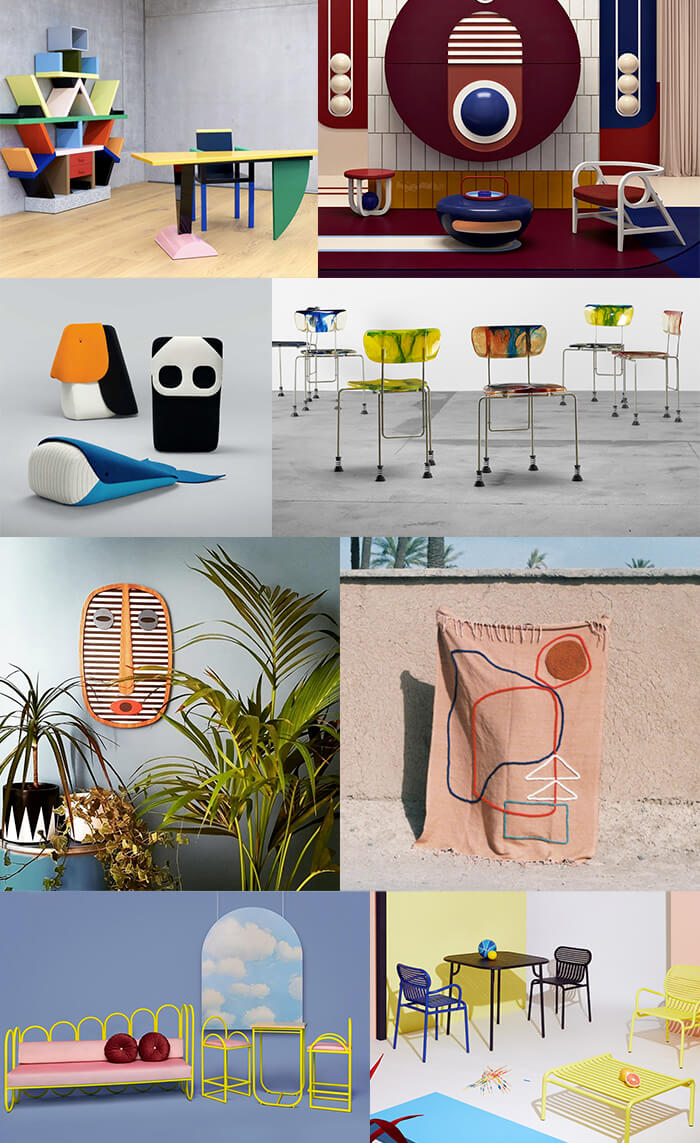
What is your goal? Do you have a line of conduct or thoughts in your work?
We live in a crude world, and I believe that designers should bring joyful, poetic and human values to open minds and beautify our world.
Personally, I need to have fun in my work to bring positive, playful creations to life.
To give you an idea, here's a project I did a few years ago with a friend.
It's an introduction to "Stupid Design", a project whose aim was to create a series of silly, trivial and even illicit objects to provoke a state of stupor in the user and question the world around him.
Do you have any advice for people who want to take the plunge and become designers?
Trusting your instincts while listening to others is not an easy exercise.
What will be the major innovations to come?
Artificial Intelligence that will one day even replace designers.
This year's A.I. chair, a collaboration between designer Philippe Starck, furniture publisher Kartell and 3D software developer Autodesk, is a perfect example. It's designed using algorithms and human intelligence, which I find very intriguing, and I can't wait to see what Artificial Intelligences come up with next.
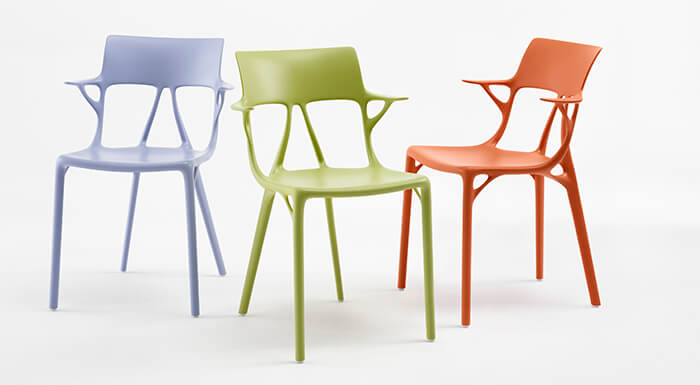
What do you think of the Eco-design trend? Do the advanced concepts appeal to you?
Every day we see highly innovative concepts.
Today, I'm very sensitive to this philosophy of collecting, sorting and recomposing to create new materials and new objects. The work of German designer Dirk Vander Kooij and his Meltingpot table is a pertinent example. This table is compression-molded from a variety of plastic waste materials (garden furniture, vases, CDs) to create a surprisingly random surface, resulting in an object that can be mass-produced while remaining unique. The result is an object that can be mass-produced yet remains unique, an almost work of art that sublimates waste.
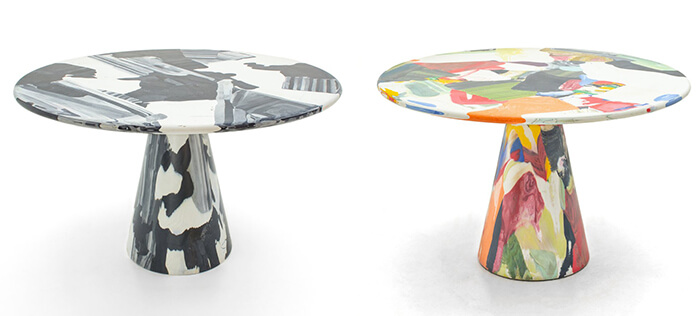
The Full Grown project also appeals to me because it's based on the concept of taking the time to make sustainable objects. Designing a chair by nature, waiting 10 years for the branches to grow around a structure as if you were gardening and reaping what you sow.
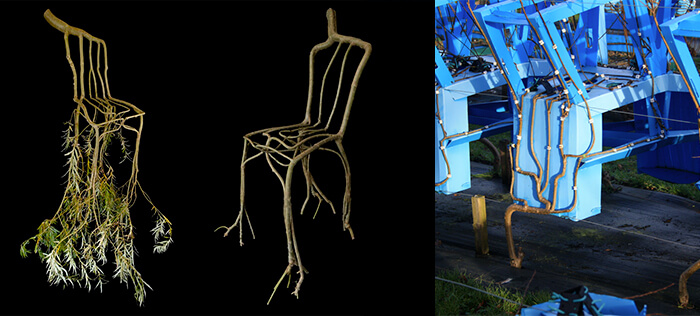
In conclusion, the committed spirit and values of the Emmaüs workshops touch me deeply. I love this blend of humanitarian design and eco-design. Bringing furniture back to life and giving it beauty by recovering old furniture. I love training craftsmen and apprentices to design new furniture.
